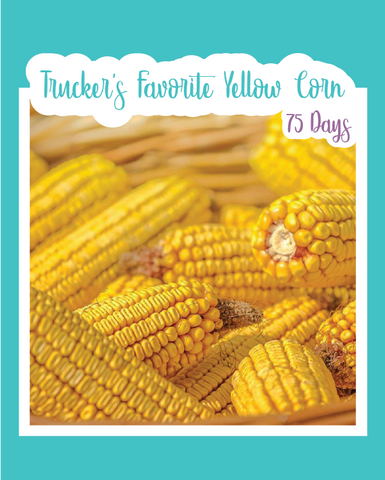
Early Golden Bantam Corn
Seed Count: Approx. 25 seeds
Days to Maturity: 75-80 days
Description: Early Golden Bantam corn is an old time favorite, with delicious, mouth wateringly sweet flavor. Its flavor is so sweet, that it's the variety that made yellow sweet corn popular. To this day, it still wins the hearts of home growers. Early Golden Bantam yields 5-7 inch ears, covered with 8-10 rows of golden, plump, richly sweet kernels that grow on 5-6 ft stalks. It is best for freezing and fresh corn-on-the-cob eating. This corn was originally introduced during a time period when only white sweet corn was desired, however, it quickly rose to fame. Why you ask? Because Early Golden Bantam sprouts in cool soil, when other varieties couldn't, and was the earliest producer around.
How To Grow
Sowing: One week, after frost, or when the soil consistently reaches 60 degrees F (corn will not germinate if soil temps are less than 55 degrees), plant the corn 1" deep and 8-12" apart. Plant blocks of four short rows (or in squares, if you are in a small space. I plant 4 corn stalks per sq. ft.) to ensure good pollination. Long skinny rows will result in poor pollination. Germination can take 5-6 days. Companion plant corn with, peas, cucumbers, squash, or pole beans; plants that like shade, like lettuce, also grows well with corn. However, avoid planting tomatoes near corn, since they share similar pests, and compete for vertical space and nutrients. Corn can also be grown in containers that are at least 12 inches deep and wide (4 plants can grow in a container this size).
Growing: Corn requires large quantities of water and fertilizer to produce full healthy ears. Give corn 1 1/2 inches of water per week, and make sure to remove weeds so they do not compete for water and nutrients. To increase chances of proper pollination, hand pollinate by shaking the plants several times a day, to make sure the pollen reaches corn silks. To reduce problems with army worms, and corn ear worms, the organic compound Spinosad can be used on corn tassels and new growth once a week. This corn grows to about 5-6 feet tall.
Harvesting: Harvest corn ears, and eat as sweet corn, when husks reach the appropriate size, about 5-7 inches. The silks should have turned brown, but are still moist to the touch. To check, you can slightly peel back the husk to reveal the kernels. Puncture one, if the liquid is clear, it is not ready, if it is milky, harvest your corn asap, and if there is no liquid, it has grown past its prime. This corn is great eating fresh off the stalks, grilled, boiled, or even frozen and stored for later. To save seeds, leave corn on its stalks to completely dry in the field. They are ready to harvest for seeds, when the stalk and the ears turn completely brown with no green coloring. However, since continued rainy weather and humidity compromises the quality of the ears, drying them inside may be the best route. Choose a dry location with moderate heat, but out of direct sunlight; hang the stalks upside down, or lay them out flat until they are dry enough seed storage.




